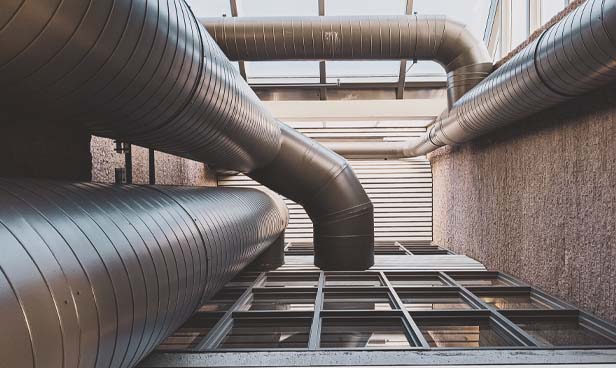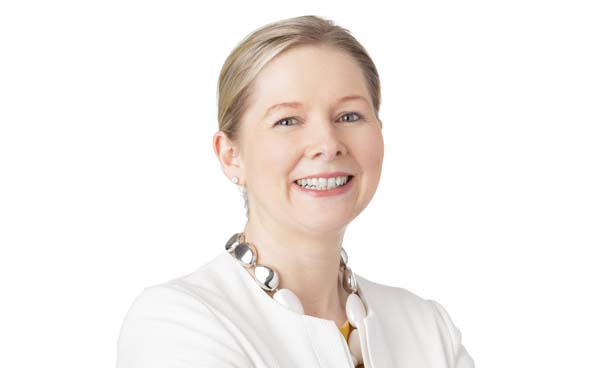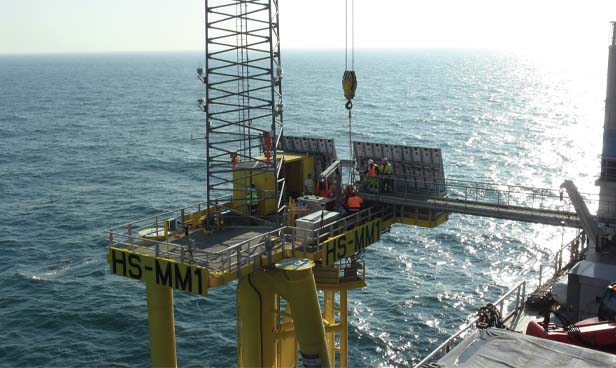
Renewable heat obligation
5th October 2021
Transport: Avoid, shift and improve
5th October 2021Tapping into Ireland’s offshore wind potential calls for change

Mary Quaney, Group Chief Executive, Mainstream Renewable Power.
Mary Quaney, Mainstream Renewable Power’s Chief Executive, discusses the potential for Ireland to be a world leader in offshore wind energy generation.
When advocates speak of Ireland becoming a “European renewable energy superpower”, Mary Quaney knows what that actually means.
As Group Chief Executive Officer of Mainstream Renewable Power, she is not inclined to indulge in hyperbole.
Still, she does acknowledge that this is a “very, very exciting time”.
Quaney joined Mainstream in 2009, and was the company’s Group Chief Financial Officer from 2017. She was appointed to the board in 2019 and was appointed as Chief Executive in August 2020.
During this first year in her new role, the company has signed a €1 billion deal with Aker Horizons. The Norwegian company, founded by Kjell Inge Røkke, one of Norway’s most successful businessmen, has taken a 75 per cent equity stake.
“With the Aker Group now as our controlling shareholder, we are part of a much larger organisation. Access to the capital markets provides a very strong point now for us to grow quite significantly over this next period of time, so it’s a very exciting phase for Mainstream.
“The development, construction and operation of renewable energy is a very capital-intensive type of business, particularly in the context of Mainstream’s substantial development pipeline.
“So, being part of the Aker group really provides the very strong environment to facilitate deployment of significant amounts of capital, plus the synergies within the Aker group are very important.”
Mainstream remain a separate company within the Aker Group, retaining its pre-existing brand, identity and management team and Mainstream still retains 25 per cent of retail shareholders, the vast majority of whom are Irish individuals.
“We continue to be an Irish headquartered company, combined with a very strong, supportive and ambitious new owner,” the Chief Executive adds.
“Ireland, quite simply, has one of the best offshore renewable energy resources anywhere in the world. We have a sea area of approximately 900,000 km2 which at over 10 times the size of our landmass, is one of the largest seabed territories in Europe. We also have some of the highest wind resource you’ll find anywhere on the globe.
“The long-term potential is in the region of 75 gigawatts (GW) of offshore wind power to be realised on the west coast.”
Quaney also highlights the opportunities to develop and grow supply chains locally.
“We have the opportunity to develop an industry sector to rival the ‘tech’ or the ‘pharma’ industries that have been so successful in Ireland,” she says.
“The Government has clearly stated that offshore wind is absolutely essential to meeting the overall energy ambition of 70 per cent renewable energy electricity by 2030 and with its newly published Climate Bill, the Irish Government aims to reduce total carbon emissions by 51 per cent by 2030 compared to 2018 and commits Ireland to climate neutrality by 2050.
“So really, the potential is here to become a world leader in offshore wind energy generation.”
The Maritime Area Planning Bill, which Taoiseach Micheál Martin has hailed as “the biggest reform of marine governance in a century”, comes before the Oireachtas this term. However, Quaney identifies three policy areas which could prove to be obstacles in meeting the Government’s climate action plan targets.
Firstly, there is the Government’s timeline in establishing the new Marine Area Regulatory Authority (MARA), which is a key piece of the State’s new maritime planning legislation. As part of this, MARA will license large scale projects such as offshore wind farms and electricity interconnectors, planning approval for which will be handled by An Bord Pleanála.
“Right now, the foreshore department is responsible for survey applications up to the 12 nautical mile limit, but there isn’t any mechanism for projects located beyond that,” she highlights.
“That is effectively prohibited until MARA is up and running. The Department has briefed that that will take 12 to 18 months at least to get MARA operational following the enactment of the legislation.”
Mainstream supports Wind Energy Ireland’s call for interim measures to be including in the new Bill which would empower the Minister for Environment to grant survey licences beyond the 12 nautical mile limit until such time as MARA is established.
How the proposed bill deals with the issues of design flexibility is also an area of concern for the wider industry, Quaney says.
“What we are recommending and what works very well in other jurisdictions is a flexible design approach.”
The Chief Executive refers to a system in Britain known as the “Rochdale envelope”, so named after two legal cases dealing with outline planning applications for a proposed business park in Rochdale.
“It allows developers, at the submission stage, to build flexibility into concepts for the outline of the wind farm ultimately,” she explains.
“Again, in our experience, internationally, it’s a very tried and trusted and solid approach that provides an appropriate level of flexibility without taking any further environmental risks.”
Without such a provision, the resulting planning framework would emerge “very rigid”, and result in a process where developers have to reapply for consent if any elements of the design have changed or there have been technological improvements which can result in significant delays. If Ireland is to meet its climate targets, time is not on our side, so an efficient framework is vital.
Earlier this year, the Irish Planning Institute welcomed the National Marine Planning Framework, but cautioned that it would place “significant resource demand” on “already over-stretched” planning authorities and An Bord Pleanála.
“Ireland’s authorities need to be able to facilitate a smooth, transparent and efficient planning system “without delays”, given the volume of applications coming through,” says Quaney, explaining that England and Wales represent the most “mature” offshore market, run through The Crown Estate.
Adding: “There is a very well established tried and tested planning system which has enabled an industry to be established in the UK, with a local supply chain, and significant creation of jobs.”
It is a model Ireland should look towards, she believes, with “industry and government working together from the outset to work through the potential blockages”.
“We have the opportunity to develop an industry sector to rival the ‘tech’ or the ‘pharma’ industries that have been so successful in Ireland.”
According to the Chief Executive, Britain’s approach also resulted in reducing the cost of developing offshore wind.
“Now the UK offshore wind sector is the most advanced globally, and Mainstream has developed about 20 per cent of all of the offshore wind plant in construction and operations in the UK today,” she says.
Mainstream’s offshore wind “heritage” dates to the 2003 commissioning of Ireland’s first offshore wind farm on the Arklow Bank by its predecessor Airtricity.
“Since then, we have developed over five GW of offshore wind capacity and most of that is in UK waters,” says Quaney. “Today, we are developing offshore wind in Asia, we’re developing south-east Asia’s largest offshore wind farm in Vietnam, and we have a number of other offshore projects in Vietnam in development.
“Then we’re working on offshore projects in other geographies in Asia Pacific, in the Americas, and across Europe. I believe that we’re probably one of the most experienced renewables developers active here in our home market, and being an Irish company, we’re very proud of this.”
The much bigger opportunity for Ireland is to export renewable energy to Europe. The ‘supergrid’ concept, pioneered by founder Eddie O’Connor and the technology under development by sister company SuperNode is “key to that”, according to Quaney.
“Ireland needs to tap into the resources it has, with an unrivalled geographical position we may have taken for granted until now,” she concludes.
Contact
Emmet Curley, Head of Communications
T: +353 (0)86 2411 690
E: emmet.curley@maisntreamrp.com
W: www.mainstreamrp.com


